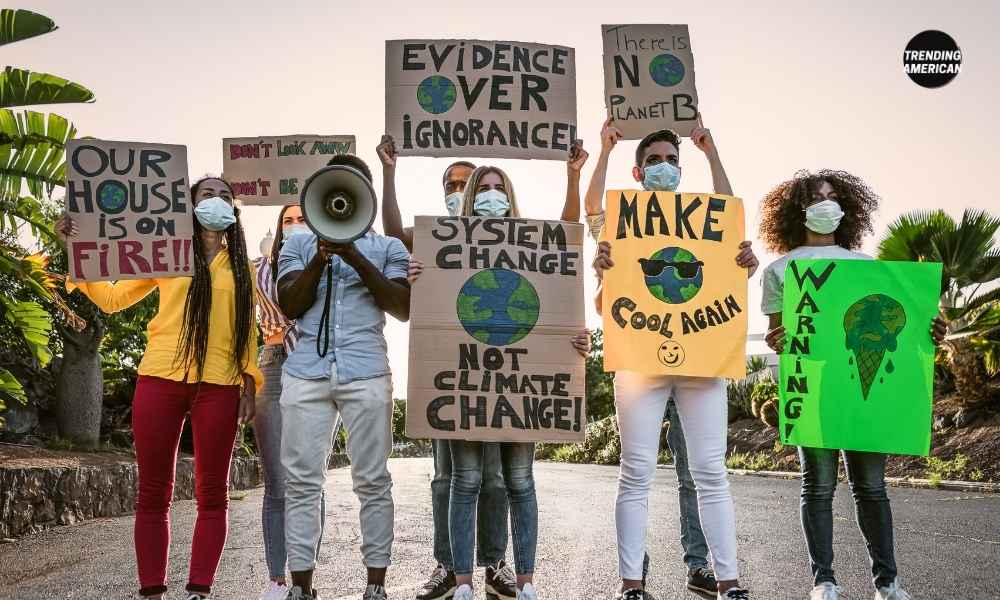An Overview of Climate Action Platform
One of the biggest challenges the world is currently experiencing is climate change. It has a dire impact on all of us now and will have a greater impact on future generations. The repercussions of the severe water shortages, flooding, and droughts that India is now experiencing are endangering its ability to develop as a nation. India must improve its ability to combat climate change. As a result, a national climate action platform has been announced by the government.
What is a Climate Action Platform?
A climate action platform deals with the efforts made by various nations to reduce emissions of greenhouse gases and strengthen adaptive resilience and adaptability to climate-induced impacts, including strategizing and climate action plans, bringing attention to the significance of climate action, enhancing human and institutional capacity regarding climate change mitigation, adopting renewable energy sources, moving toward greener resources, etc.
The Objective of the Climate Action Platform
The goal of the climate action platform includes encouraging the growth of new forests and renewable energy sources, improving adaptation strategies, advising producers and consumers on leading sustainable lifestyles, mobilizing financial resources, and transferring technologies.
Climate change policy in India is overseen by the Ministry of Environment, Forests, and Climate Change (MoEFCC). This involves counselling state and sectoral governments on how to enhance sustainable production and consumption patterns and lower greenhouse gas emissions. To do this, the ministry must increase its capability, enhance its application of current knowledge, develop appropriate policies, and track outcomes.
Approach to Climate Action Platform
The Indian Ministry of Environment, Forests and Climate Change receives research and models for climate protection and resilience under the project supporting the Institutionalization of Capacities on Climate Change Studies and Actions (ICCC) (MoEFCC). Additionally, it assists the ministry in putting Nationally Determined Contributions into action (NDCs). Additionally, the project encourages the development of networks among important stakeholders, forges connections with regional, national, and worldwide research institutions, and supports the development of a knowledge platform that is open to the public.
Benefits of the Climate Action Platform
There are numerous advantages to cutting down on climate pollutants. This included averting the loss of tens of millions of tons of staple crops each year, improving food security, preserving crucial ecosystems and ecosystem services, lowering the risk of hazardous and irreversible climate tipping points, and significantly advancing the 2030 Agenda for Sustainable Development.
Prevent Global Warming
By 2050, global efforts to cut climate pollutants can stop the rise in global temperature by 0.6°C. To reduce global warming’s rate and hit the Paris Agreement’s 2°C target, carbon dioxide and other climate pollutants must be cut from emissions. According to the Intergovernmental Panel on Climate Change, all climate-forcing emissions, including excessive CO2 emissions, must be drastically reduced to halt the gradual increase in global temperature.
Health Benefits
A warmer environment exacerbates problems regarding public health. These illnesses were made worse by the adverse effects of climate change. Recently, the world is also seeing an increase in vector-borne illnesses, and diminished access to food and safe water. Reducing short-lived climate pollutants can reduce public health hazards and decrease global warming. Other harmful air pollutants include short-lived climate pollutants such as black carbon and tropospheric ozone (O3). Reducing them will stop millions of people from suffering from illnesses caused by air pollution every year. Asia is predicted to have the highest health advantages from the fall in carbon and other harmful emissions.
Economic Benefits
Economic costs result from the effects of climate pollutants on human health, ecosystems, and agricultural productivity. In addition to long-term secondary advantages like enhanced public health, decreased poverty and inequality, and lower climate change impacts, reducing short-lived climate pollutants can have immediate economic advantages ranging from job creation and increased household income.
Support the Climate Action Platform
We all need to work towards a platform that supports climate action. To take a step towards sustainability, you should support and be responsible towards your duties as a citizen and follow all the policies made for better climate change.







